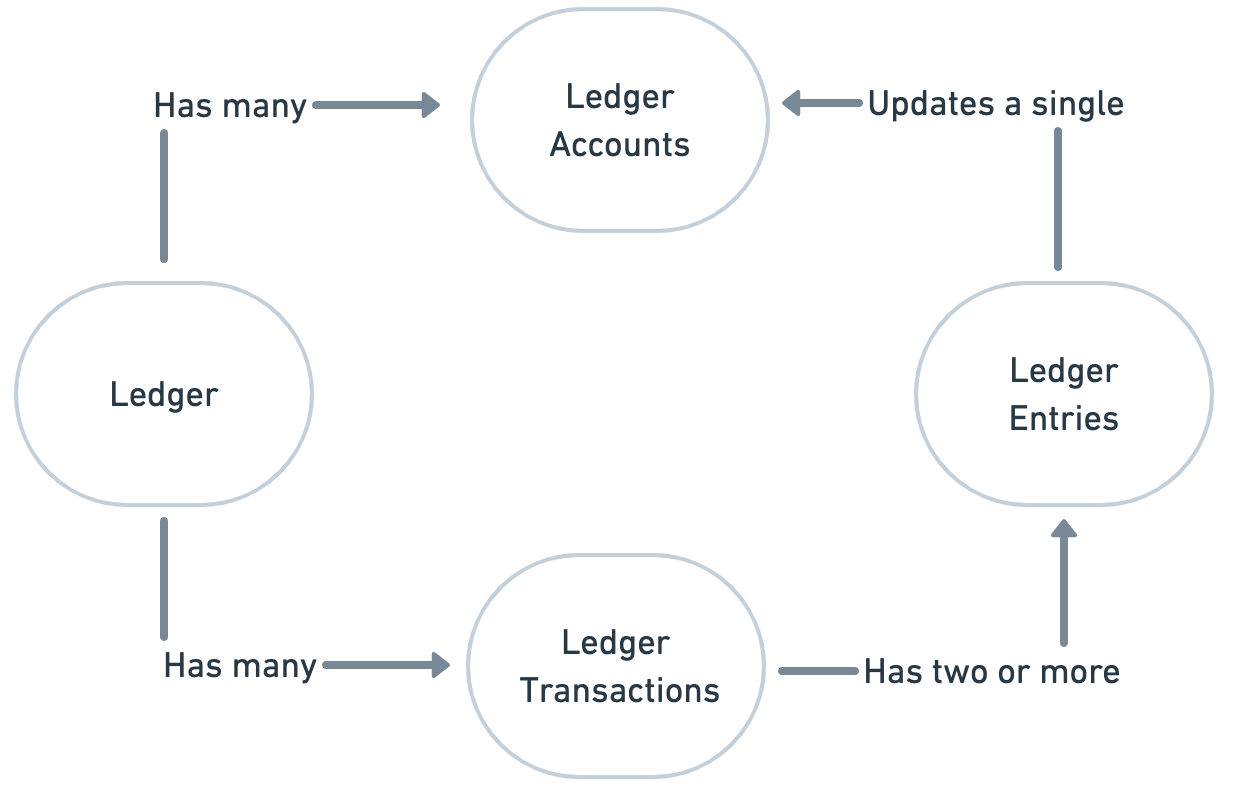Ledgers Objects
This guide introduces the four core objects in the Ledgers API and how they relate to each other.
Ledgers has a simple data structure built around four core objects.
The ledger object represents your entire product ledger. You may set up a single Ledger to track all money movement across your products, or you may want to maintain different Ledgers for different discrete . Nested within your larger ledger object are ledger accounts. These are the balances your platform will track.
Also nested within your ledger object are ledger transaction objects. These represent financial events that happen on your platform. Each ledger transaction object is composed of at least two ledger entry objects. The Ledger Transaction obeys accounting rules; its credit and debit entries must sum to the same amount. Each ledger entry will update a single ledger account.
Ledgers supports any currency as well as values that behave like currency (rewards, points, etc.).

Ledgers also features account category objects, which are aggregations of Ledger Accounts or other Account Categories. Read more about Ledger Account Categories here.
Next Steps
- Review our Guide to Debits and Credits for a brief introduction to the accounting principles you need to know to get started with Ledgers.
- Explore use cases with our Use Case Guides.
- Explore sample API calls by use case in our Quickstart Guides.
Updated 7 months ago